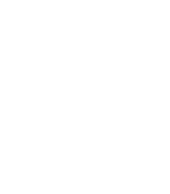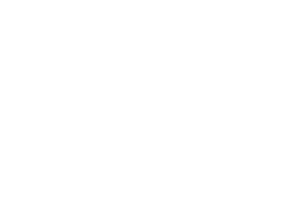 |
 |
 |

|
BRITISH TEXTILES
A Game of Tennis, Helen Wills, Textile design, 1927, given by the Stehli Silks Corporation, Courtesy Victoria & Albert Museum
Fashion Forward! Textile Design: East and West, GRAD: Gallery for Russian Arts and Design, 1 July - 17 October 2015, www.grad-london.com
|
|
 |
FASHION FORWARD!
Textile Design: East and West
1/7/2015-17/10/2015
GRAD presents a ground-breaking exhibition that challenges preconceptions about the history of modern textile design in Russia, Britain and the United States. Curated by GRAD’s Alexandra Chiriac and Elena Sudakova, the exhibition offers a unique opportunity to see rare pieces from prestigious collections.
|

|
Posted 13 May 2015
|
Share this:
|
|
The display showcases twentieth century textile design by bringing together rarely seen items, including fabric samples, items of clothing, and original designs on paper, drawing on loans from the Victoria & Albert Museum, the Imperial War Museum, and the Central St Martin’s Museum in London; the Paul and Karen Rennie Collection in Folkestone; and the Mayakovsky Museum in Moscow. By placing innovative Russian textiles alongside their Western counterparts, the exhibition explores the universal appeal of these designs and reflects on the creative exchanges between East and West. The result is a treasure-trove of experimental design covering the late 1910s to the mid-1940s in Britain, Russia and the United States.
|
|
|
|
|
|
Curators
Alexandra Chiriac
Elena Sudakova
The first decades of the twentieth century saw increasing experimentation in the field of
textile design, quite often connected with issues of national identity. In the Soviet Union
printed textiles were decorated with symbols of collectivisation and industrialisation
– such as tractors and trains, rich harvests and electrification, sportsmen and pioneers –
intended to communicate the state’s utopian dream to the largely illiterate population. Yet innovative Russian designers also responded to trends in international avant-garde art.
Ludmila Mayakovskaya, sister of the poet Vladimir Mayakovsky, was one such pioneer who experimented with airbrushing and stencilling techniques to create stunning geometric compositions on silk and velvet which won prizes at the Paris Exhibition of Decorative Arts in 1925. A talented contemporary of Sonia Delaunay, Mayakovskaya was unfairly forgotten and the exhibition at GRAD showcases her startlingly contemporary designs for the first time in London.
The Paris Exhibition of Decorative Arts – the very occasion that gave rise to the term ‘art
deco’ – also inspired the Stehli Silks Corporation to create its ‘Americana’ prints between
1925 and 1927 to challenge the supremacy of French fashions. The thematic patterns,
including skyscrapers, railways, stars and stripes or tennis players, were created by artists, designers and even celebrities such as the tennis player Helen Wills and the photographer Edward Steichen. Stehli’s artistic director claimed that these designs were ‘for modern American women by modern American artists, reflecting the modern American scene’. The images were stylised in a manner similar to the Soviet patterns and were equally zealous in their celebration of a modern utopia.
In Britain there was also a search for national identity in design, although the interest in
the Arts & Crafts movement meant that experimentation took place on a smaller scale. The ‘Footprints’ workshop, led for many years by the designer Joyce Clissold, produced hand printed patterns that encompassed both avant-garde abstraction and modern motifs such as cinema reels or sound waves. It was not until the Second World War that Britain experienced a boom in propaganda textile production. Fabrics ranging from luxurious silk to plain cotton were emblazoned with patriotic messages and political slogans in a bid to bolster support for the war effort. Firms such as Mayfair-based Jacqmar produced countless propaganda designs, some even featuring the hammer and sickle emblem of the Soviet
Union, Britain’s war-time allies, whilst Ascher commissioned well-known artists such as
Henry Moore and Felix Topolsky to design a scarf collection. In 1946 these designs were
shown at the first major British post-war exhibition of design ‘Britain Can Make It.’
|
|
|
The first decades of the twentieth century saw increasing experimentation in the field of textile design, often connected with issues of national identity. In the Soviet Union printed textiles were decorated with symbols of collectivisation and industrialisation – such as tractors and trains, rich harvests and electrification, sportsmen and pioneers – intended to communicate the state’s utopian dream to the largely illiterate population. Yet innovative Russian designers were also responding to trends in international avant-garde art. Ludmila Mayakovskaya, sister of the poet Vladimir Mayakovsky, was one such pioneer who experimented with airbrushing and stencilling techniques to create stunning geometric compositions on silk and velvet which won prizes at the Paris Exhibition of Decorative Arts in 1925. A talented contemporary of Sonia Delaunay, Mayakovskaya was unfairly forgotten and the exhibition at GRAD showcases her startlingly contemporary designs for the first time in London.

|

|

|

|

|
|
|
Ludmila Mayakovskaya, c.1920s, textile design on airbrushed silk, Courtesy Mayakovsky Museum, Moscow
Fashion Forward! Textile Design: East and West, GRAD: Gallery for Russian Arts and Design, 1 July - 17 October 2015, www.grad-london.com
|
|
|
|
|
Ludmila Mayakovskaya, c.1920s, textile design on airbrushed velvet, Courtesy Mayakovsky Museum, Moscow
Fashion Forward! Textile Design: East and West, GRAD: Gallery for Russian Arts and Design, 1 July - 17 October 2015, www.grad-london.com
|
|
|
|
|
Ludmila Mayakovskaya, c.1920s, textile design on airbrushed velvet, Courtesy Mayakovsky Museum, Moscow
Fashion Forward! Textile Design: East and West, GRAD: Gallery for Russian Arts and Design, 1 July - 17 October 2015, www.grad-london.com
|
|
|
|
|
The Paris Exhibition of Decorative Arts – the very occasion that gave rise to the term ‘art deco’ – also inspired the Stehli Silks Corporation to create its ‘Americana’ prints between 1925 and 1927 to challenge the supremacy of French fashions. The thematic patterns, including skyscrapers, railways, stars and stripes or tennis players, were created by artists, designers and even celebrities such as the tennis player Helen Wills and the photographer Edward Steichen. Stehli’s artistic director claimed that these designs were ‘for modern American women by modern American artists, reflecting the modern American scene’. The images were stylised in a manner similar to the Soviet patterns and were equally zealous in their celebration of a modern utopia.

|

|

|

|

|
|
|
AMERICAN TEXTILES
Helen Wills, Textile design, printed silk crepe de Chine, 1927, given by the Stehli Silks Corporation, Courtesy Victoria & Albert Museum
Fashion Forward! Textile Design: East and West, GRAD: Gallery for Russian Arts and Design, 1 July - 17 October 2015, www.grad-london.com
|
|
|
|
|
AMERICAN TEXTILES
Charles Buckles Falls, Textile design, printed silk crepe de Chine, 1927, given by the Stehli Silks Corporation, Courtesy Victoria & Albert Museum
Fashion Forward! Textile Design: East and West, GRAD: Gallery for Russian Arts and Design, 1 July - 17 October 2015, www.grad-london.com
|
|
|
|
|
BRITISH TEXTILES
London Wall, c.1942, scarf, designed by Arnold Lever for Jacqmar, rayon, Courtesy Paul and Karen Rennie Collection, Folkestone and GRAD
Fashion Forward! Textile Design: East and West, GRAD: Gallery for Russian Arts and Design, 1 July - 17 October 2015, www.grad-london.com
|
|
|
|
|
In Britain there was also a search for national identity in design, although the interest in the Arts & Crafts movement meant that experimentation took place on a smaller scale. The ‘Footprints’ workshop, led for many years by the designer Joyce Clissold, produced hand printed patterns that encompassed both avant-garde abstraction and modern motifs such as cinema reels or sound waves. It was not until the Second World War that Britain experienced a boom in propaganda textile production. Fabrics ranging from luxurious silk to plain cotton were emblazoned with patriotic messages and political slogans in a bid to bolster support for the war effort. Firms such as Mayfair-based Jacqmar produced countless propaganda designs, some even featuring the hammer and sickle emblem of the Soviet Union, Britain’s war-time allies. Meanwhile, Ascher commissioned well-known artists such as Henry Moore and Felix Topolsky to design a scarf collection. In 1946 these designs were shown at the first major British post-war exhibition of design ‘Britain Can Make It.’

|

|

|

|

|
|
|
Lettres aux Soldats Francais, 1940s, friendship scarf, produced by Jacqmar, rayon, Courtesy Paul and Karen Rennie Collection, Folkestone and GRAD
Fashion Forward! Textile Design: East and West, GRAD: Gallery for Russian Arts and Design, 1 July - 17 October 2015, www.grad-london.com
|
|
|
|
|
Happy Landings, 1940s, scarf designed by Arnold Lever for Jacqmar, silk, Courtesy Paul and Karen Rennie Collection, Folkestone and GRAD
Fashion Forward! Textile Design: East and West, GRAD: Gallery for Russian Arts and Design, 1 July - 17 October 2015, www.grad-london.com
|
|
|
|
|
London 1944, 1944, scarf, designed by Felix Topolsky for Ascher, rayon, Courtesy Paul and Karen Rennie Collection, Folkestone and GRAD
Fashion Forward! Textile Design: East and West, GRAD: Gallery for Russian Arts and Design, 1 July - 17 October 2015, www.grad-london.com
|
|
|

|

|

|

Ludmila Mayakovskaya,Textile design, airbrushed paper, c.1920s, Courtesy Mayakovsky Museum, Moscow
Fashion Forward! Textile Design: East and West, GRAD: Gallery for Russian Arts and Design, 1 July - 17 October 2015, www.grad-london.com
|
|
About GRAD
GRAD is a pioneering institution that brings new insights into Russian art, design and culture to international audiences through exhibitions, publications, live events, collaborations and digital engagement. Their purpose is to share their specialist knowledge in ways that capture the imagination, inspire creativity and spark new ideas.
The gallery opening hours are:
Tuesday-Friday 11.00 – 19.00
Saturday 11.00 – 17.00
GRAD
3-4a Little Portland Street, London, W1W 7JB
+44 20 7637 7274
www.grad-london.com
See the Agenda>
|
|
|
|
|
|
|
|
|
|


